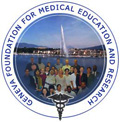Asociación de caracteres neurológicos y psicológicos en pacientes con traumatismo craneoencefálico frontal
Palabras clave:
traumatismos craneocerebrales, caracteres neurológicos, caracteres psicológicos, asociaciónResumen
Introducción: los traumatismos craneoencefálicos frontales constituyen la primera causa de muerte y discapacidad en pacientes menores de 50 años; las relaciones dimensionales, dinámicas y dialécticas entre la Neurocirugía y la Psicología demuestran el valor científico de considerar integralmente al ser humano como una unidad biopsicosocial. Objetivo: identificar asociaciones entre las características neurológicas del trauma craneoencefálico frontal leve y moderado y el estado psicológico. Métodos: se realizó un estudio clínico epidemiológico transversal descriptivo con una muestra de 42 pacientes de un total de 150 con trauma craneoencefálico frontal leve y moderado que acudieron al Servicio de Neurocirugía del Hospital “Arnaldo Milán Castro” de la Provincia de Villa Clara en el período comprendido entre enero de 2011 y diciembre de 2015. Resultados: el análisis conjunto de las variables neurológicas y psicológicas en la muestra estudiada puso en evidencia la asociación entre ellas y las lesiones del lóbulo frontal con particularidades según la afectación de la conciencia, el hemisferio afectado y la localización de la lesión. Conclusiones: a través de las variables estudiadas se comprobó la presencia de distintos niveles de alteraciónes psicológica y neurológica combinadas en un mismo paciente; lo que las convierte en elementos relevantes a tener presentes en la evaluación neuropsicologica de los pacientes en su diagnóstico y en la orientación de su rehabilitación integral.Descargas
Citas
1. Leibson CL, Brown AW, Ransom JE, Diehl N, Perkins PK, Mandrekar J, et al. Incidence of traumatic brain injury across the full disease spectrum: a population based medical record review study. Epidemiology. 2011 Nov;22(6):836-44. Doi: 10.1097/EDE.0b013e318231d535.
2. Theadom A, Barker- Collo S, Feigin VL, Starkey NJ, Jones K, Jones J, et al. The spectrum captured a methodological approach to studying incidence and outcomes of traumatic brain injury on a population level. Neuroepidemiology. 2012 Dic;38(1):18-29. Doi: 10.1159/000334746.
3. Daroff RB, Femchel GM, Jakovic J. Trauma of the nervous system: craniocerebral trauma. In: Bradley’s neurology in clinical practice. 6th ed. San Francisco: Elsevier. 2012. p. 942-956.
4. Corrigan JD, Hammond FM. Traumatic brain injury as a chronic health. Condition. Arch Phys Med Rehabil. 2013 Jun;94:1199-201. Doi: 10.1016/j.apmr.2013.01.023.
5. Ahman S, Saveman BI, Styrke J, Björnstig U, Stålnacke BM. Long-term follow-up of patients with mild traumatic brain injury: a mixed-method study. J Rehabil Med. 2013;45(8):758-64. Doi: 10.2340/16501977-1182.
6. Donéstevez de Mendaro AA. Traumatismo craneoencefálico. Disfunción cognitiva. Acta Méd Centro [Internet]. 2011[citado 15 Oct 2017]; 6(1): [aprox. 8 p]. Disponible en: http://www.revactamedicacentro.sld.cu/index.php/amc/article/view/636
7. Donéstevez AA, Blanco González R, Nepomuceno Padilla NL, Camacho García L. Trauma craneoencefálico frontal y su evaluación neuropsicológica. Rev Medicentro Electrón [Internet]. 2011 [citado 15 Oct 2017];5(1):[aprox. 5p.]. Disponible en: http://www.medicentro.sld.cu/index.php/medicentro/article/view/74
8. Leon-Carrion J, Leon-Dominguez U, Pollonini L, Wu MH, Frye RE, Dominguez-Morales MR, et al. Synchronization between the anterior and posterior cortex determines consciousness level in patients with traumatic brain injury (TBI). Brain Res. 2012 Oct;1476:22-30. Doi: 10.1016/j.brainres.2012.03.055.
9. Thompson HJ, Dikmen S, Temkin N. Prevalence of comorbidity and its association with traumatic brain injury and outcomes in older adults. Res Gerontol Nurs. 2012 Ene;5(1):17-24. Doi: 10.3928/19404921-20111206-02.
10. Leitgeb J, Mauritz W, Brazinova A, Majdan M, Janciak I, Wilbacher I, et al. Glasgow Coma Scale score at intensive care unit discharge predicts the 1-year outcome of patients with severe traumatic brain injury. Eur J Trauma Emerg Surg. 2013 Jun;39(3):285-92. Doi: 10.1007/s00068-013-0269-3.
11. Leopold A, Krueger F, del Monte O, Pardini M, Pulaski SJ, Solomon J, et al. Damage to the left ventromedial prefrontal cortex impacts affective theory of mind. Soc Cong Affect Neurosci. 2012 Nov;7(8):871-80. Doi: 10.1093/scan/nsr071.
12. Ramos-Zúñiga R, González-de la Torre M, Jiménez-Maldonado M, Villaseñor-Cabrera T, Bañuelos-Acosta R, Aguirre-Portillo L, et al. Postconcussion syndrome and mill head injury: the role of early diagnosis using neuropsychological test and functional Magnetic Resonance-Spectroscopy. World Neurosurg. 2014 Nov;82(5):828-35. Doi: 10.1016/j.wneu.2013.09.018. /j.wneu.2013.09.
13. Fraga Maia H, Dourado I, Fernández R C, Werneck GL. Factores asociados a la incapacidad funcional global luego de transcurrido un año despues del traumatismo craneoencefalico. Salud Colect [Internet]. 2013 Dic [citado 18 Oct 2017];9(3):335-52. Disponible en: http://www.scielo.org.ar/scielo.php?script=sci_arttext&pid=S1851-82652013000300005
14. Rostami E, Davidsson J, Ng KC, Lu J, Gyorgy A, Walker J, et al. A model for mild traumatic brain injury that induces limited transient memory impairment and increased levels of axon related serum biomarkers. Front Neurol. 2012 Jul;3:115. Doi: 10.3389/fneur.2012.00115.
15. Kristiansson H, Nissborg E, Bartek JJr, Andresen M, Reinstrup P, Rommer B. Measuring elevated intracranial pressure through noninvasive methods: a review of the literature. J Neurosurg Anesthesiol. 2013 Oct ;25(4): 372-85. Doi: 10.1097/ANA.0b013e31829795ce.
16. Su SH, Wang F, Hai J, Liu NT, Yu F, Wu YF, et al. The effects of intracranial pressure monitoring in patients with traumatic brain injury. PloS One. 2014 Feb;9(2). Doi: https://doi.org/10.1371/journal.pone.0087432
17. Lee SY, Kim SS, Kim CH, Park SW, Park JH, Yeo M. Prediction of outcome after traumatic brain injury using clinical and neuroimaging variable. J Clin Neurol. 2012 Sep;8(3): 224-9. Doi: 10.3988/jcn.2012.8.3.224.
18. Pavawalla SP, Schmitter-Edgecombe M, Smith RE. Prospective memory after moderate to severe traumatic brain injury: a multinomial modeling approach. Neuropsychology. 2012 Ene;26(1): 91-101. Doi: 10.1037/a0025866.
19. Løvstad M, Funderud I, Endestad T, Due-Tønnessen P, Meling TR, Lindgran M, et al. Executive function after orbital or lateral prefrontal lesions: Neuropsychological profiles and self – reported executive functions in everyday living. Brain Inj. 2012; 26(13-14):1586-1598. Doi: 10.3109/02699052.2012.698787.
20. Brasure M, Lamberty GJ, Sayer NA, Nelson NW, Macdonald R , Ouellette J, et all. Participation after multidisciplinary rehabilitation for moderate to severe traumatic brain injury in adults. Arch Phys Med Rehabil. 2013 Jul;94(7):1421-3. Doi: 10.1016/j.apmr.2012.12.019.
21. Téllez Varga J. Depresión y trauma craneoencefálico. Avances en Psiquiatría Biológica. 2005; 6:86-100.
22. Gould KR, Ponsford JL, Spitz G. Assosiation between cognitive impairments and anxiety disorders following traumatic brain injury. J Clin Exp Neuropsychol. 2014;36(1):1-14. Doi: 10.1080/13803395.2013.863832.
23. Stuss DT. Functions of the frontal lobes: relation to executive functions. J Int Neuropsychol Soc. 2011 Sep;17(5):759-65. Doi: 10.1017/S1355617711000695.
24. Mendes Sambalundo A, Herrera Jiménez LF, Angulo Gallo L, Guerra Morales V. Exploración neuropsicologica y manifestaciones de ansiedad y depresión en pacientes con trauma craneoencefálico en Huambo, 2012. Rev Hosp Psiquiátr La Habana [Internet]. 2015 [citado 18 Oct 2017];12(2):[aprox. 10p.]. Disponible en: http://www.revistahph.sld.cu/2015/Nro%202/exploracion%20neuropsicologica.html
Publicado
Cómo citar
Número
Sección
Licencia
Aquellos autores/as que tengan publicaciones con esta revista, aceptan los términos siguientes:
- Los autores/as conservarán sus derechos de autor y ceden a la revista el derecho de primera publicación de su obra, el cuál estará simultáneamente sujeto a una licencia Creative Commons Atribución/Reconocimiento-NoComercial 4.0 Internacional — CC BY-NC 4.0 que permite a terceros compartir la obra siempre que se indique su autor y su primera publicación esta revista.
- Los autores/as podrán adoptar otros acuerdos de licencia no exclusiva de distribución de la versión de la obra publicada (p. ej.: depositarla en un repositorio institucional o publicarla en un volumen monográfico) siempre que se indique la publicación inicial en esta revista.
- Se permite y recomienda a los autores/as difundir su obra a través de Internet (p. ej.: en archivos telemáticos institucionales o en su página web) antes y durante el proceso de envío, lo cual puede producir intercambios interesantes y aumentar las citas de la obra publicada. (Véase El efecto del acceso abierto).





 15 diciembre del 2025
15 diciembre del 2025


